I know we’ve been here a while but we were so excited to be in D.C. for an extended stay and being able to immerse ourselves in all that it offers! With a new day, we headed back over the Potomac for a couple of somber stops. First up was the U.S. Marine Corps Memorial and one of the most iconic statues ever designed. Based on the famous photograph of the second flag raising on the island of Iwo Jima, this memorial honors the many sacrifices of Marines since November 10, 1775 on so many battlefields defending our freedom!
On the morning of February 19, 1945, the 4th and 5th Marine Divisions invaded Iwo Jima after an ineffective 72-hour bombardment. The 28th Regiment of the 5th Division, was ordered to capture Mount Suribachi. They reached the base of the mountain on the afternoon of February 21 and, by nightfall the next day, had almost completely surrounded it. On the morning of February 23, Marines of Company E, 2nd Battalion, started the tortuous climb up the rough terrain to the top. At about 10:30 am men all over the island were thrilled by the sight of a small American flag flying from atop Mount Suribachi. That afternoon, when the slopes were clear of enemy resistance, a second, larger flag was raised in the same location.
Joe Rosenthal of the Associated Press caught the afternoon flag-raising in an iconic photograph that eventually won a Pulitzer Prize. Sculptor Felix W. de Weldon, then on duty with the US Navy, was so moved by the image that he constructed first a scale model and then a life-size model of it. Rene Gagnon, Ira Hayes, and John Bradley posed for the sculptor as he modeled their faces in clay. These three men were believed to be the survivors of the famous flag raising (the others were killed on Iwo Jima). All available pictures and physical statistics of the three who had given their lives were collected and then used in the modeling of their faces.
For additional information, follow this link: https://www.nps.gov/gwmp/planyourvisit/usmc_memorial.htm



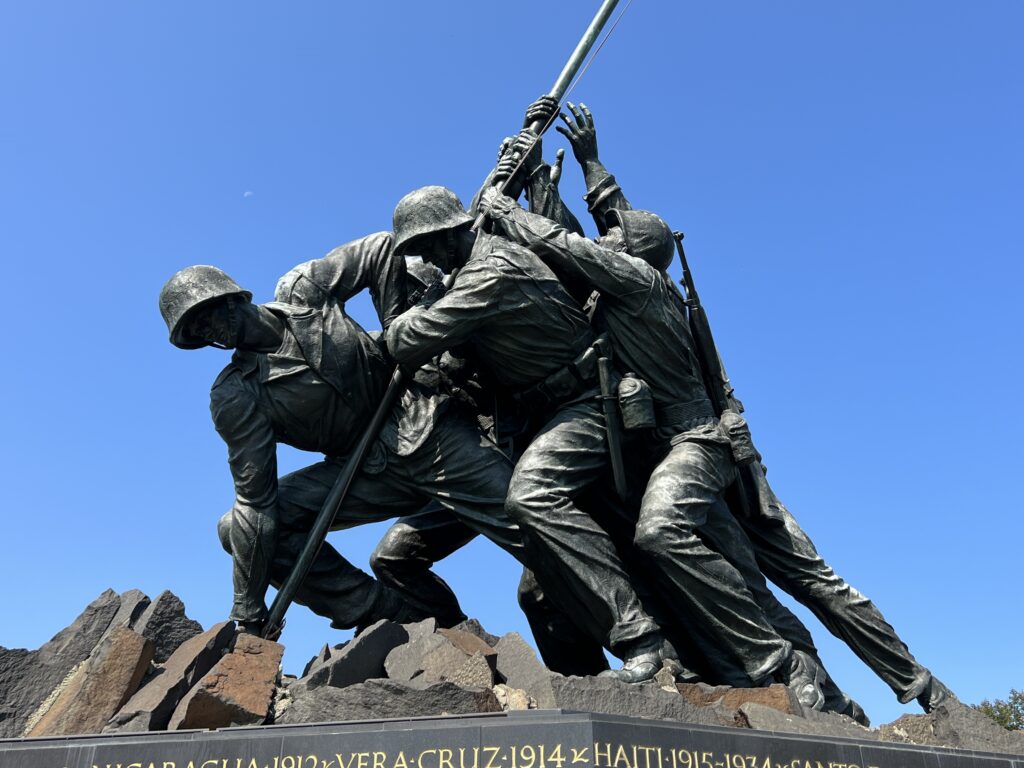

From here, we rode our bikes south along the Richmond Highway about a mile to the Pentagon. We wanted to pay our respects at the 9/11 Pentagon Memorial for the first time. It was just a few days since the 21st Anniversary of the attack when we arrived and there were flowers still in place that were left behind in remembrance of the victims. This was truly a solemn place and to see the Pentagon up close and the section that had been rebuilt after the attack and Memorial just along side.
The Pentagon Memorial captures that moment in time at 9:37 a.m. when 184 lives became intertwined for eternity. Each victim’s age and location at the time of the attack have been permanently inscribed into the Memorial by the unique placement and direction of each of the 184 Memorial Units.
Elegant and simple, the Pentagon Memorial serves as a timeline of the victims’ ages, spanning from the youngest victim, three-year-old Dana Falkenberg, who was on board American Airlines Flight 77, to the oldest, John D. Yamnicky, 71, a Navy veteran, also aboard Flight 77 that morning.
Each Memorial Unit is a cantilevered bench, a lighted pool of flowing water, and a permanent tribute, by name, to each victim, in one single element. Each memorial bench is made of stainless steel and inlaid with smooth granite. Each Memorial Unit contains a pool of water, reflecting light in the evenings onto the bench and surrounding gravel field.
Each Memorial Unit is also specifically positioned in the Memorial to distinguish victims who were in the Pentagon from those who were on board American Airlines Flight 77. At the 125 Memorial Units honoring the victims of the Pentagon, visitors see the victim’s name and the Pentagon in the same view. At the Memorial Units honoring the 59 lives lost on Flight 77, the visitor sees the victim’s name and the direction of the plane’s approach in the same view.
Victims from the same family are linked by a plaque at the end of the pool of water, which lists their family members who also died in the attack, forever binding the family together.
To learn more, click here: https://pentagonmemorial.org





After we left the Pentagon, we rode back across the Potomac and headed to the Tidal basin to check out the Franklin Delano Roosevelt Memorial https://www.nps.gov/frde/index.htm and Martin Luther King Jr. Memorial https://www.nps.gov/mlkm/index.htm that boarder the West and North end of the Tidal basin. The FDR memorial is a bit hidden and out of the way from the all of the traffic but well worth the short walk to explore. From here it was a quick walk around to the north end of the tidal basin to the MLK Jr. Memorial which was an impressive piece of art. The shear enormity of the 159 blocks of shrimp pink granite is impressive.
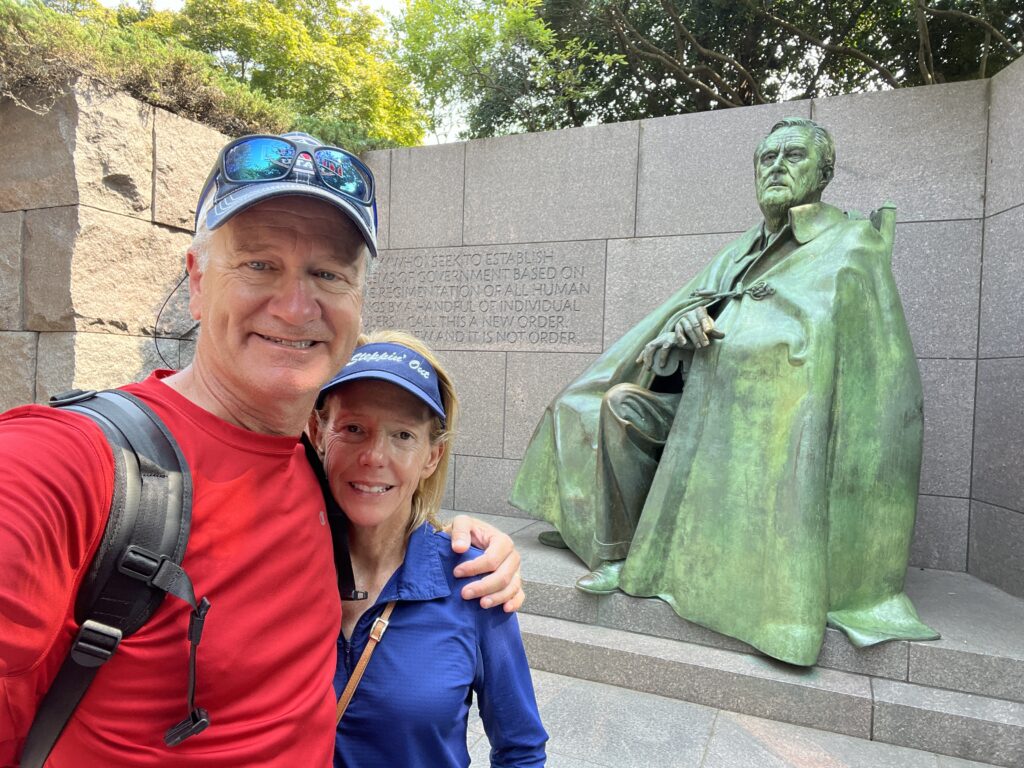





Our next stop was to the East end of the National Mall and behind the U.S Capitol to find the U.S. Supreme Court building. Click here for more info: https://www.supremecourt.gov/about/courtbuilding.aspx

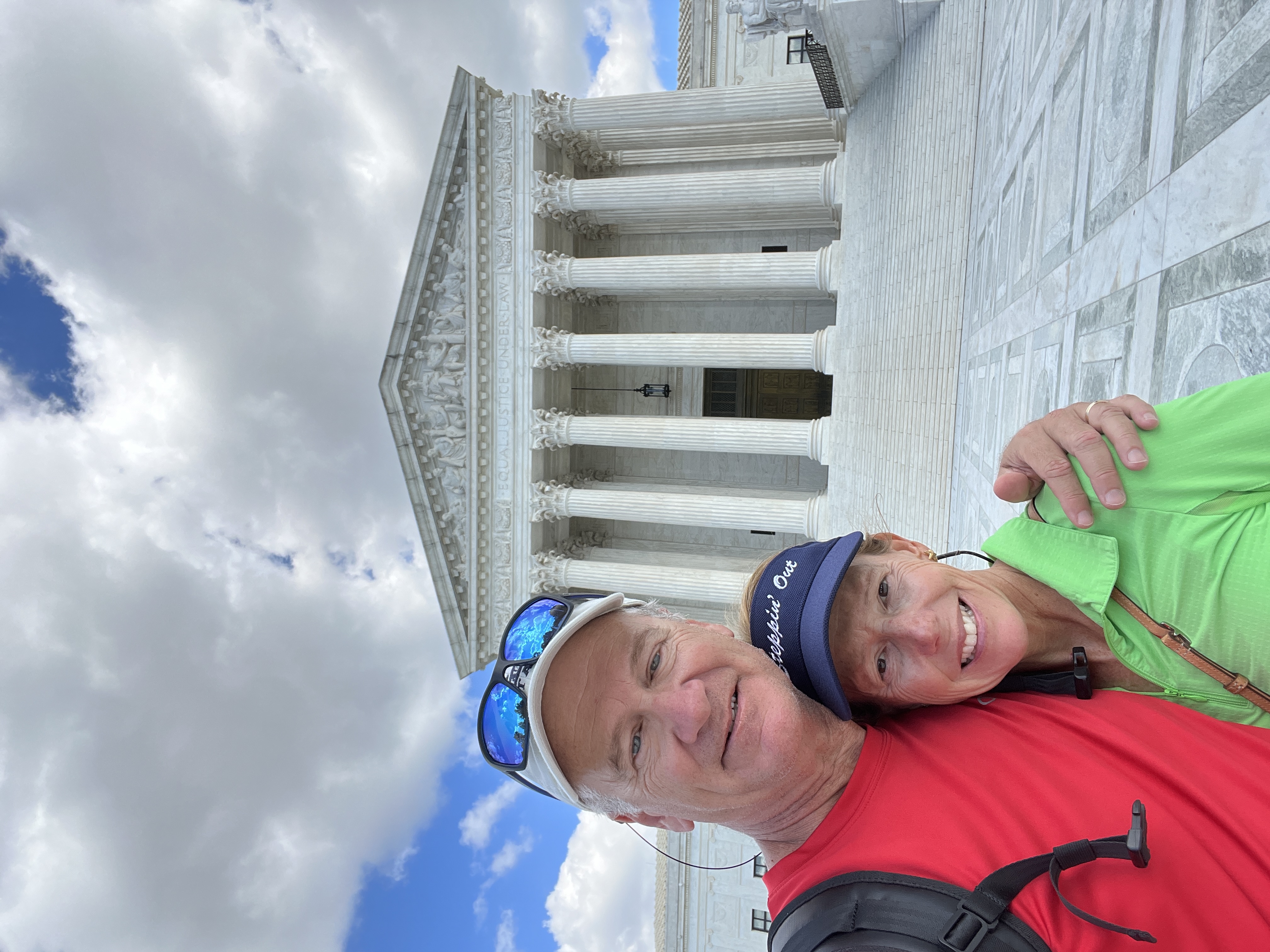


From the Supreme Court, which we’re not allowed inside of, we strode over to the Library of Congress for a behind the scenes tour of another incredible building. It’s almost overwhelming to imagine the books and artifacts that this facility holds. Some of the greatest works of our country’s history and probably more than a few things that are rather mundane.
For more information, click here: https://www.loc.gov/visit/
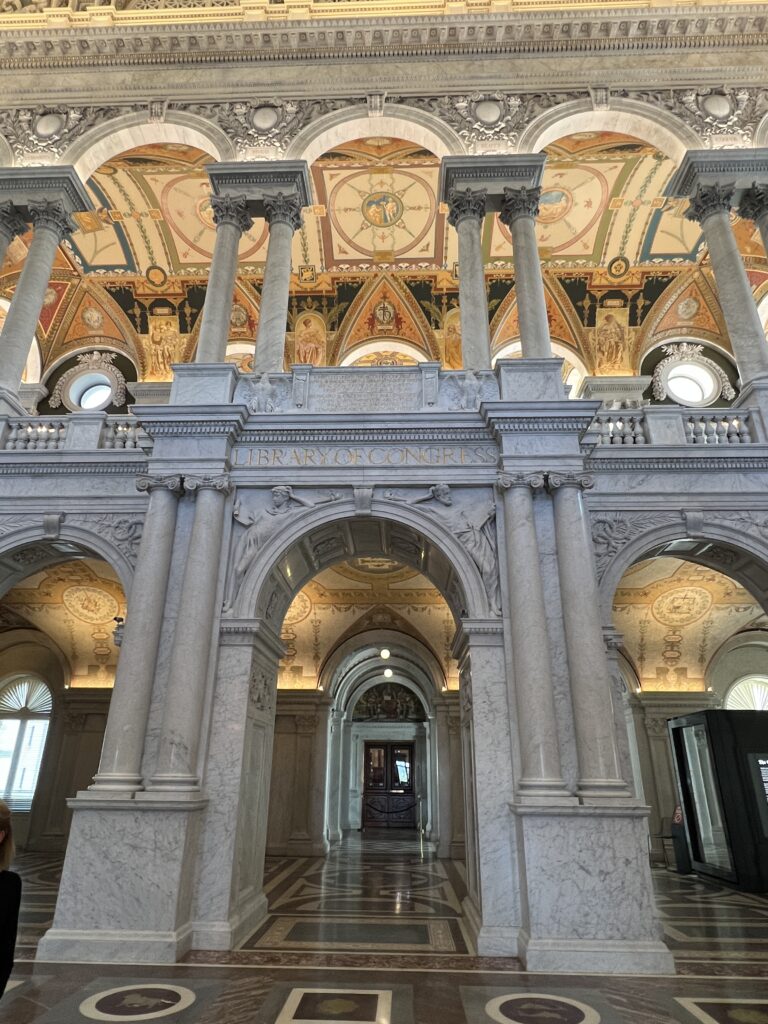
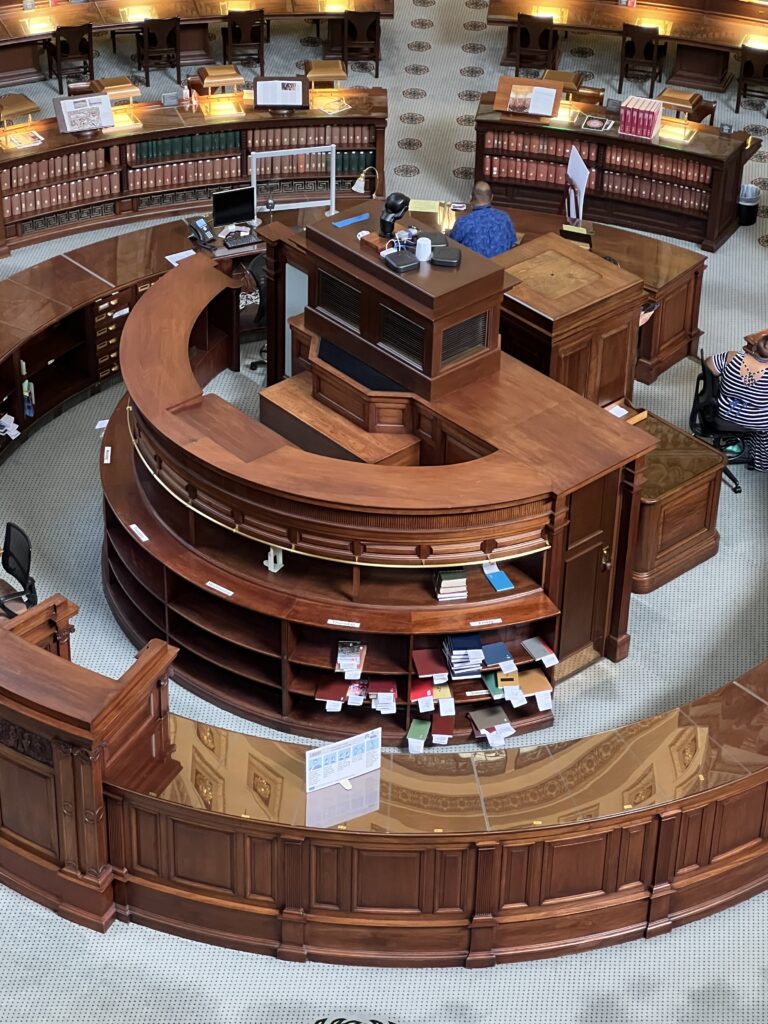


To finish our day out, we rode our bikes a bit North of here to the Ford Theatre to see where we lost our 16th President at the hands of an assassin!
On April 14, 1865, Lincoln and his wife decided to visit the theatre to see the comedy Our American Cousin. John Wilkes Booth, a Confederate sympathizer, snuck into the President’s Box and shot Lincoln with a single-shot Deringer pistol. Booth fled into the night, and Lincoln died the next morning in the Petersen House, a boarding house located just across the street from the theatre.
We learned a great deal more about the events of that day and following 12 days as the hunt for Booth intensified. There is a walking tour that takes you thru the path Booth took before finally being captured
For more information, follow this link: https://fords.org/visit-us/





